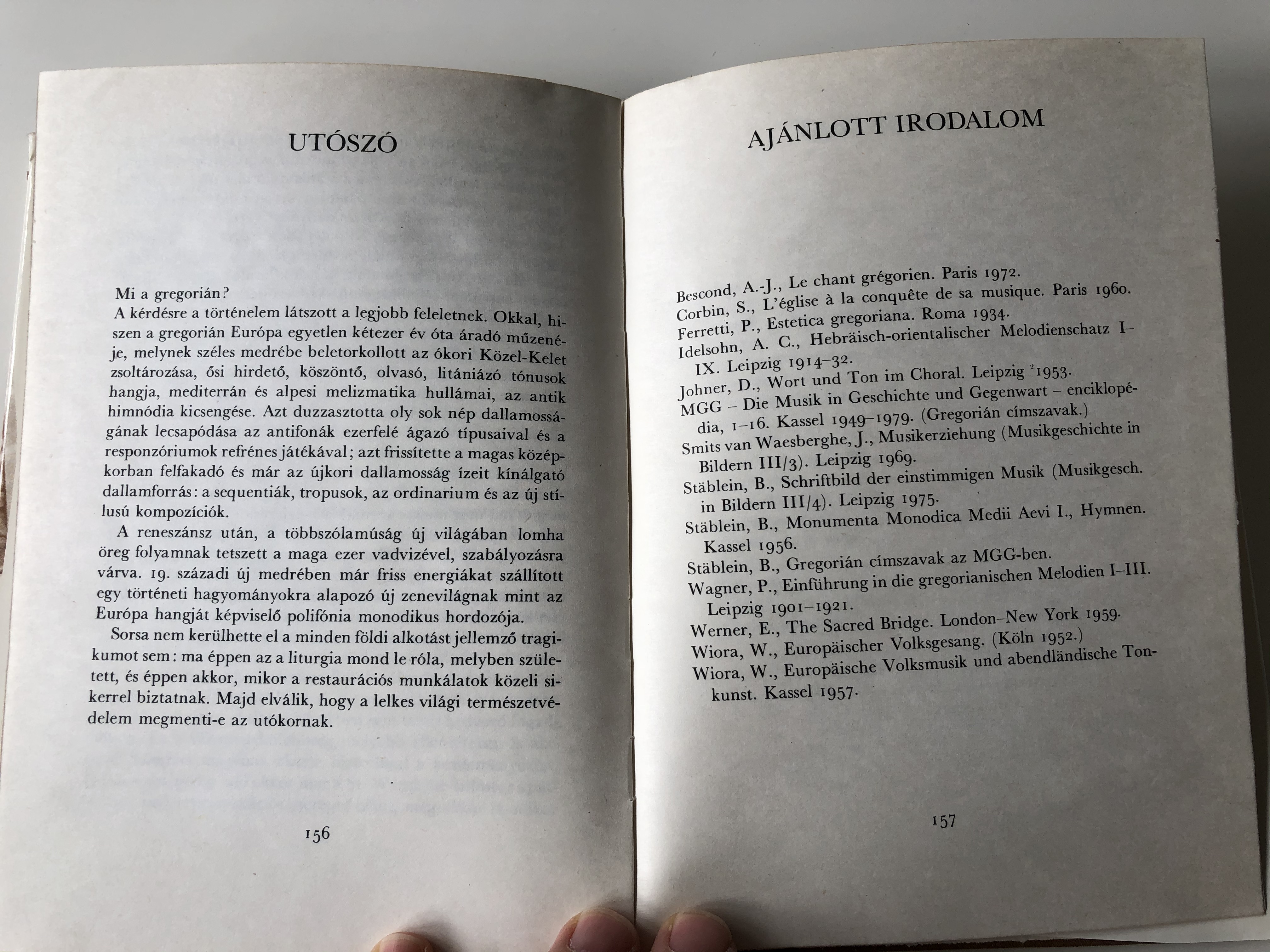Product Overview
Mi a gregorián by Rajeczky Benjamin / What is Gregorian - History and style of gregorian music in Hungarian language / Zeneműkiadó 1982 / Hardcover
Hardcover 1982
ISBN: 9789633304495 / 978-9633304495
ISBN-10: 9633304490
PAGES: 157
PUBLISHER: Zeneműkiadó kiadó
LANGUAGE: Hungarian / Magyar
!!! Condition of this book is USED LIKE NEW !!!
Hungarian Summary:
A gregorián az európai zenekultúra bölcsője, a világ leggazdagabb dallamkultúrája, minden dallamszövés forrása és mintaképe, az egyszólamú zene legdiadalmasabb kivirágzása. Az elnevezés I. Gergely pápára utal, aki rendszerbe foglaltatta a korabeli liturgiát. A Földközi-tenger melléki dallamkincs elterjesztésében nagy szerepe volt Ambrus milánói püspöknek, a különböző kolostoroknak és a szájhagyománynak. Jelentős lépés volt a dallamok megbízható lejegyzésének lehetővé tétele Arezzói Guido vonalrendszere segítségével.
Az idők folyamán a gregorián háttérbe szorult a vokális polifónia, majd a hangszeres zene elterjedésének következtében. Új életre csak a múlt századi kutatások keltették, elsősorban a solesmes-i iskola. Jelenleg nagy harc folyik az egyetemes emberi kultúra eme óriási értékének megmentése érdekében.
Ez a témája Rajeczky Benjamin könyvének. Szakszerűen, kottapéldákkal és táblázatokkal illusztrálva, ugyanakkor izgalmasan, lebilincselően, a legszélesebb olvasóközönség számára is élvezetesen ír tárgyáról, s minden bizonnyal nagy sikerre számíthat a zeneszerető olvasók körében.
Tartalom / Contents:
| Előszó | 5 |
| Legenda | 7 |
| Ars musica - hangjegyírás nélkül | 10 |
| Őstörténet | 14 |
| Hellenista és keresztény zene | 22 |
| Dallamok | 28 |
| A liturgikus zene központjai | 32 |
| Dallamok | 52 |
| Egység felé | 65 |
| Gregorián és ars musica | 75 |
| Hangjegyírás | 89 |
| A klasszikus dallamkincs | 97 |
| Műzene és népzene | 124 |
| Új műfajok, új stílus | 128 |
| Előadás | 147 |
| Reformok | 150 |
| Utószó | 156 |
| Ajánlott irodalom | 157 |
Gregorian chant is the central tradition of Western plainchant, a form of monophonic, unaccompanied sacred song in Latin (and occasionally Greek) of the Roman Catholic Church. Gregorian chant developed mainly in western and central Europe during the 9th and 10th centuries, with later additions and redactions. Although popular legend credits Pope Gregory I with inventing Gregorian chant, scholars believe that it arose from a later Carolingian synthesis of Roman chant and Gallican chant.
Gregorian chants were organized initially into four, then eight, and finally 12 modes. Typical melodic features include a characteristic ambitus, and also characteristic intervallic patterns relative to a referential mode final, incipits and cadences, the use of reciting tones at a particular distance from the final, around which the other notes of the melody revolve, and a vocabulary of musical motifs woven together through a process called centonization to create families of related chants. The scale patterns are organized against a background pattern formed of conjunct and disjunct tetrachords, producing a larger pitch system called the gamut. The chants can be sung by using six-note patterns called hexachords. Gregorian melodies are traditionally written using neumes, an early form of musical notation from which the modern four-line and five-line staff developed.[1] Multi-voice elaborations of Gregorian chant, known as organum, were an early stage in the development of Western polyphony.




























